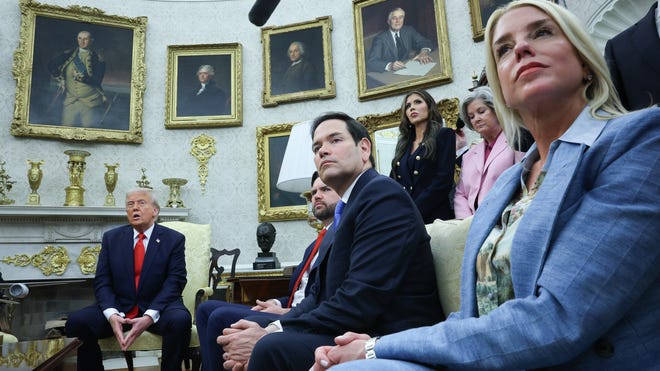Supreme Court Backs Trump’s Bid to Streamline Federal Workforce
The Trump administration has been given the green light by the Supreme Court to carry out an executive order aimed at significantly reducing the federal workforce. The decision temporarily suspends a judge’s order from San Francisco that had held up the implementation of the executive order during ongoing court appeals. This majority opinion expressed confidence in the Trump administration’s likelihood of winning its claim that the executive order and related memoranda are entirely legal, which is a significant determinant in deciding whether to grant temporary relief.
The lone dissent came from Justice Ketanji Brown Jackson who speculated that the decision might enable a supposed, unrestrained, and unauthorized disassembly of the federal government to progress rapidly, doing irreparable damage ahead of the court’s ability to verify the President’s authority for such proposals. In contrast to Justice Jackson, the prevailing sentiment supported the administration’s prerogative to downsize the federal workforce as necessary within the confines of the law.
President Donald Trump had originally issued the executive order in question back in February, calling for immediate action to pave the way for considerable reductions in the federal workforce in accordance with applicable laws. Following the issuance of the order, a collection of labor unions, local governments, and advocacy groups sought legal recourse to stop implementation.
These organizations managed to achieve a halt, at least temporarily, to the action by obtaining a preliminary injunction that prevented the government from initiating or proceeding with reductions in force (RIFs) and obligated it to share pertinent documentation that related to the RIFs with the plaintiffs. With the Ninth Circuit Court of Appeals declining to provide the Trump administration with a temporary halt on the order, a representative from the administration then approached the Supreme Court for intervention.
The argument from the administration was that the order was causing continuous and substantial detriment to the government as it obstructed the Executive Branch’s internal operations and the undisputed legal authority to plan and execute RIFs, affecting the entire government scale. The plaintiffs, on the other hand, appealed to the Justices to maintain the order.
The opposing viewpoint suggested that regardless of individual perspectives on the appropriate size and reach of the government, such vision cannot be administered by unilateral executive order, but should arise from engagement and cooperation with Congress as mandated by the Constitution and pursued traditionally by Presidents. They warned that suspending the order would enable full implementation of the Trump administration’s vision before court evaluation, thereby undermining the roles of two separate branches of government.
However, the court chose to grant the government’s request in a concise opinion. The ruling hinged on the premise of illegality of the executive order and accompanying memorandum, a notion the majority disagreed with. They held the view that, indeed, the government is likely correct in asserting that both the executive order and memorandum are lawful.
Furthermore, the majority justices were satisfied that the other criteria courts take into account when deciding to grant temporary relief were also met, which paved the way for the order to be temporarily suspended while the government’s appeal proceeded. It should be noted, however, that in taking this stand, the court did not pass judgment on the legality of any specific reduction in force approved under the executive order and related memorandum.
The point was emphasized that these RIF plans were not being evaluated by the court. Justice Sonia Sotomayor concurred with the majority decision to grant the government’s request. She shall underline that the executive order simply directs agencies to plan reorganizations and force reductions ‘consistent with applicable law’ and the memorandum.
Sotomayor agreed with offering the relief at this stage given the premise that the court isn’t considering the legality of those plans and as such does not need to decide whether they would be enacted in accordance with the law. The dissenting voice characterized the order as a ‘temporary, practical, harm-reducing preservation of the status quo’ that ultimately was overwhelmed by the court’s apparent enthusiasm for endorsing the President’s actions, despite suspected legal dubiousness.
The dissenters argued that the district court, being most familiar with the circumstances, is best equipped to determine whether the executive order initiates an extensive restructuring of the federal government, something that historically requires Congress’s approval, or merely manageable workforce reductions in line with existing law. They reasoned that the Supreme Court lacks the capacity to fully appreciate the actual details of the challenged executive action, much less overrule the learned fact-finding of the lower court in a responsible manner.
Their argument concluded with the belief that the Supreme Court should have refrained from intervening. Despite the dissenting voices, the majority opinion of the Supreme Court has bestowed a temporary victory upon the Trump administration and its quest for a more streamlined federal government.


